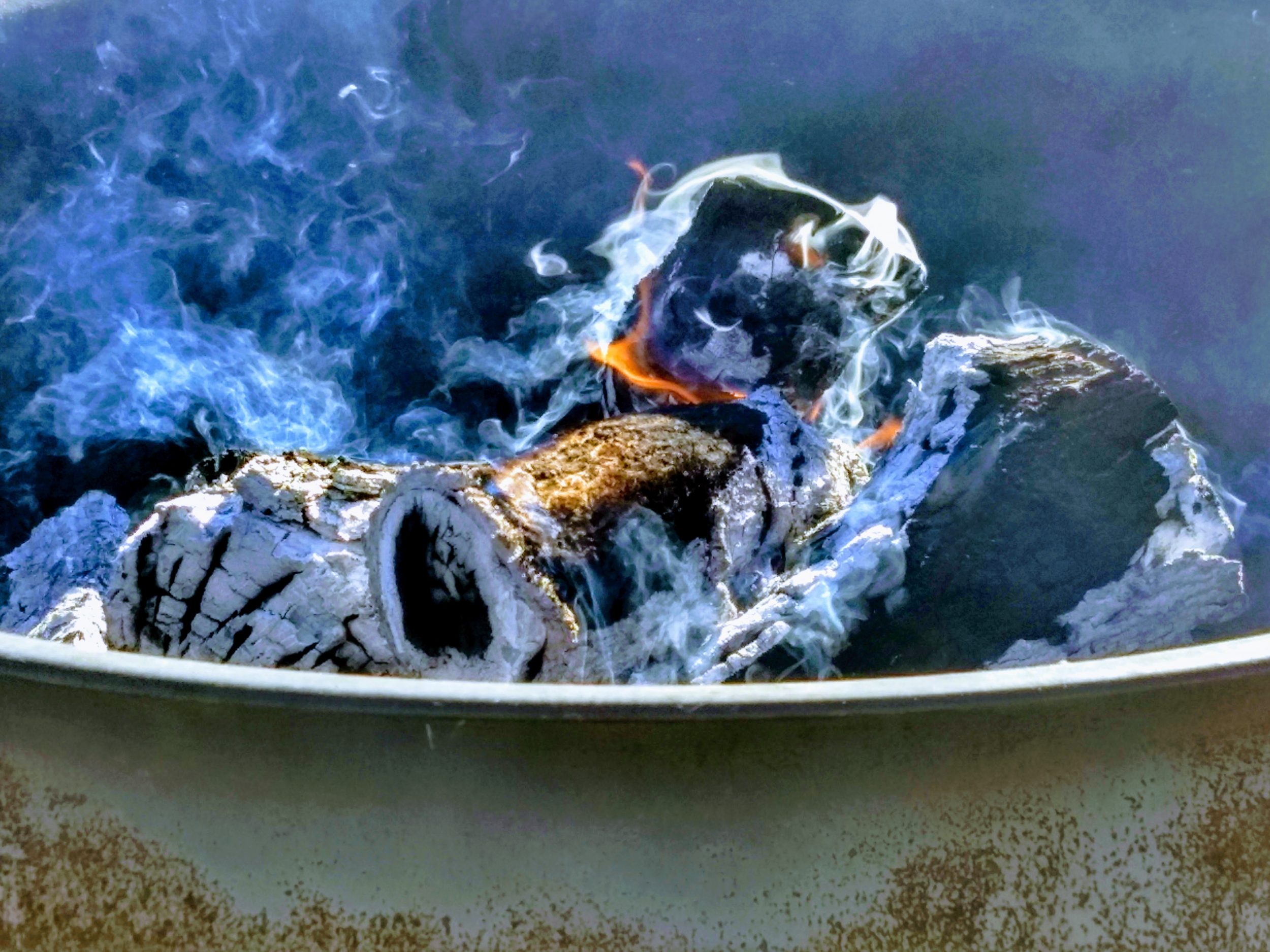My Day with the Sacred Fire
Forever ago, it seems, I financed my way through seminary with a long stint as a custodian at a religious college. I remember one large meeting where I was pushing my trash cart outside the venue while sensing the vibrancy and boisterous energy inside. It was a tough moment—heartbreaking, really—because my sense of calling and my identity as an aspiring leader was scraping against my day job. What I couldn’t see back then was that in order to be at peace within my role as a custodian, I needed to enter into the role of servant more deeply. I needed to embrace the sense of preparing the possibility that others would encounter God and carry the hope that they would—without getting in on the meeting experience myself.
Ready to Tend the Fire
Fast forward 20 years. A retreat leader called me to offer the task of tending a symbolic fire during a “Kindling the Fires of Ministry” retreat the following winter day. All I needed to do was keep a wood fire going in single degree temperatures and then help put it out at the end of the retreat. I could even spend a lot of the time inside where it was warmer—read something if I wanted. O.K., I thought, all that time with the woodstove when I was growing up was about to pay off. So I showed up the next day with long johns and mittens on, ready to tend a fire. I arrived to find the fire already kindled in a deep cauldron-style “fire pit” with the wood stacked nearby.
I was provided with a retreat schedule and a nice essay by Thomas Merton about a night watch where part of his tasks involved tending a fire. I stationed myself where I could see the fire through the window and thought I’d skim that Merton essay first and then get on with my other reading. I never made it to that other stuff. The smoky wood fire had already begun fulfilling its purpose–warming curiosity. Many people loved the smell of the smoke, at least at first, and a few even went so far as to inquire about what wood was going into the fire. Other people wanted explanation of the fire itself—why is it there? And so, as someone later remarked, I periodically served as “interpretive ranger” for the symbolic fire throughout the day.
Curating a Symbol
It turns out that people have ideas about symbolic fires and fire keepers. My basic task was to keep the fire going, and to keep it in the pit; Others liked when the flames were visible well above the edges of the fire bowl from inside the lobby. My preference was to keep from freezing by alternating between inside and outside; Others felt more comfortable when fire and keeper were next to each other. My aim was to let the symbol proclaim its meaning for itself; Others wanted me to present its meaning for them.
And so, my fire tending morphed into curating a symbol. The task brought the idea of being a Levite to mind, with all the attendant sacred chores. Sometimes my sacred chores even impacted the everyday chores of the monastery staff—and I hoped that the nice man who was sent to get some more wood from elsewhere on the grounds wasn’t too inconvenienced.
Praying with a Symbol
After the morning break, I made it a point to be by the fire when the retreatants were out. I was surprised when one person mentioned that the leaders said that I was praying for their experience during the day. I hadn’t been consciously focusing on praying, and I felt a little bad about it. However, I had been consciously trying to stay away from being flippant or cynical about what I was doing. We serve others best when we present new possibilities within the moment we share instead of simply dismissing the moment as ordinary. My fire was much like any other campfire, but it was not “just a fire.” Its moment and context made it an occasion for consideration by the retreatants and everyone else passing by. It was also an occasion for care for me. I spent the day concerned that the fire somehow be helpful for people, and my sense of caring grew as the day progressed. Such is the “prayer” of someone tending a dynamic symbol.
And I did tend it. I made the fire higher at the break times, with the fuel added 20–30 minutes beforehand so that wood would be shimmering with ash and ember. I spent the last couple of breaks out by the fire so as to encourage people to venture out. And I estimated the amount of fuel for the fire so that it would be burning higher and brighter to close the day and yet burn down to embers by the end time. During that big finale when the fire was at its highest point during the day, one passerby said, “I can finally see it, it looks good—it took it a while to get going.” I replied, “It has more to do with how much wood I put on it.” Restraint is a virtue when it comes to fire; every decent fire keeper knows that singeing things nearby really detracts from the symbolism and negatively impacts your performance review.
So, to recap: why was the fire there? To represent God’s ongoing presence and empowerment for the retreatants, and for me to enter the role of servant still more deeply.
Learn more about core Benedictine values.







1 Response